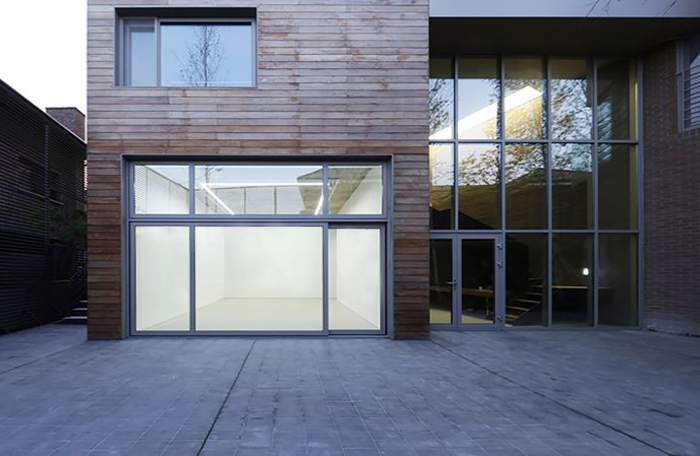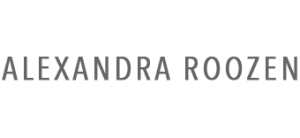Interview by Gallery2 Joongsun Nongwon
Jeju Island, South Korea

GALLERY2, Seoul, South-Korea
“These drawings show places that only exist on paper.”
Q. When did you begin utilizing paper and lead as your medium of choice? Was there a watershed moment?
A. Maybe you can say that about 5 years after graduating from art school there was a turning point. I studied painting, in particular the so-called ‘fundamental art’. In this I questioned literal painting itself, what is painting? The canvas, the stretcher bars, the gesture, etc. and of course the color of paint. But I found the use of color too symbolic and narrative. To try to understand how to use color for my work I went back to a basic action, a pencil sketch. The fact that pencil is a color specific material (graphite) allowed me to develop further and I have remained faithful to pencil drawing ever since.
Q. In your eyes, what makes paper and pencil special and appealing?
A. For me, the special thing about paper and pencil is the familiar and everyday nature, such as children’s drawings or making doodles, scribbles, etc. The pencil is not a complicated recipe, it is direct, “the hand that thinks out loud”. But pencil also lends itself to a slow and labor-intensive process. For example, as soon as you put one line on the paper, you have to deal with it. Because eraser is not part of my practice, the white of the paper is very valuable, you can never make it white again. This offers a nice exercise in balance between directness and thoughtfulness.
Q. Do you have any looming interest in working with color?
A. It actually feels like I’m already working with color, just think of the gray tones of graphite in combination with paper structures and the influence of (day) light; Herein lies the question what colors the color?
Q. In your artistic process, from when the idea is planted in your mind, to planning and creating into tangible form; what do you find most challenging, or think is your “sticking point”?
A. I think my artistic process starts with a premonition that needs to grow and mature, it’s a feeling that’s a bit dormant in the background. When that becomes more urgent, I draw small diagrams, a basic design and try to get rid of all unnecessary information; For example, the result can be a line at 1/3 or a point exactly in the middle. The construction of this basic design must have enough tension so that I can make an extensive series with it. That is why the beginning is crucial to my work, the execution a consequence that requires a different concentration and precision.
Q. Are you able to envision the completed work before you start?
A. I work in series because I find the power of repetition fascinating; It is as if the repetition makes an image stronger, it enables me as a maker to look again and discover new possibilities. During the process of making a series, there comes a moment that I have ‘lived through or internalized’ the image. But I can never fully predict the image and should never underestimate the autonomy of the image. The creative process is a collaboration between imagination and what happens really in the drawing.
Q. There is a certain point in that creative process that you have to consider the work “done”. At what point do you decide that your work is “complete”?
A. In my experience, each work tells something about the previous and the next work, so that the underlying concept is never finished. But from the serial viewpoint, although I follow the same set of work rules, it is possible that there is a different result. Sometimes only a small detail, such as a different shade, gesture or light. This can raise other meanings and new questions for me. Maybe then I can say that the work is ‘finished’.
Q. Geometrical forms are apparent in Gridly, Sidewinder, and Stripped. Between those shapes the background, a subtle space with varying density/shades can be seen. This seems to be a meticulous effort on your part, rich with intention. Can you tell us about it?
A. You have observed that nicely, there is indeed a kind of foreground and background in these earlier series I have always regarded the background in a drawing as a vague, indefinable plain. You can see that in the way I use the pencil, as a careful scan of that unknown, illusionary space. But after all, the paper is a flat thing. Therefore, I also wanted this illusionary space to become more concrete and provide a counterweight or balance to the geometric shapes in the foreground. Perhaps this is where the need arose to mix foreground and background into one thing, which may have happened in my recent series of Plain Dust and Two Tone.
Q. Those geometrical shapes are gone in Ruis/Noise, Disturb, Axis, and Seen by Hand. My observation is that the change came through the use of a more mechanical technique. It can almost be described as traces of physical force. This appears to be a significant change in your work. Why did you come to use this mechanical method?
A. I think a number of factors emerged simultaneously; An interesting question for me, for example, is the role of the drawing hand. What is the gesture or handwriting? Who or what determines handwriting? Is it replaceable? From all these kinds of questions I went deeper into the role of my own handwriting. I came up with mechanical tools for making large dry point etches (Ruis/Noise), or a plotter in which the cartridges are replaced by pencils (Disturb). And more recently, self-designed tools that allowed me to draw with hundreds of pencils at once (Axis). For example, this research made it clear to me that maybe every tool has its own “handwriting”, and I probably should redefine “hand”. The funniest experience was the plotter experiment, I ended up becoming the assistant of the machine, just sharpening and replacing pencils…
Q. The series Axis and To Bend both have radial points, or a point of (dis)appearance. They feel more purposeful in their directionality. Is that a key aspect of understanding the image, or is it merely a mechanism to continue expanding upon your works?
A. Indeed, series Axis and To Bend have a very direct, central design, which is only a 1-point layout. In all my series I look for a basic grid that I can repeat. This example is a very minimal, but complex in execution; I started rotating around that center point with hundreds of pencils or working from the center to the edges of the paper, resulting in a central perspective. In the series To Bend and Plain Dust, this center is the starting point of each stripe; This mechanism of working eventually plows the paper open in the center. It was fascinating that this resulted in a reversal of meaning; on a theoretical level it is a point of disappearance, but on a material level it is a point of appearance.
Q. Your exploration of mechanical tools, from etching to drill machines is interesting. Does this open up techniques and approaches formerly limited by physiology? Or is it a way to give orbit and track to the more free-flowing movements of the body?
A. Both. I find it fascinating that a physical has its own possibilities and limitations. For example, the length of my arm determines the maximum measurements in my work. This is no different with tools, they also have their own possibilities and limitations. I think the extra can arise if both work together.
I have thematized this in the series Seen by hand, which also contains a film. By using unconventional self-designed drawing tools I don’t have everything under control, this gives a kind of free-flowing workspace. It offers drawing options that I would never have allowed otherwise. This film Seen by Hand* can also be seen in the Gallery2 Joongsun Nongwon exhibition on Jeju Island.
Q. Can you describe your creative process involved in the Two Tone series to be presented this solo exhibition?
A. It fascinates me that these drawings show places that only exist on paper. Illusionary spaces created by an everyday, simple tool such as pencil. Two Tone is a continuation of earlier series: the central perspective from 1 point in the middle has now grown to 2 points, resulting in a line between points. I took the step to shift the line as well as to let the 2 points slide over it. This is a change of emphasis: from line to plane, which provides a different insight into the perception of the surface. By playing with tonality, the surface – and the spaces created – shifts between close and far, or between intimate and distant.
Q. Compared to your previous series of works, what has changed, or what new explorations have you made?
A. I actually work very little on a small format. The small format requires a different technique. For example, a drawn detail in a large format is ‘small’, but a drawn detail in a small format is quickly perceived as ‘large’. There is a difference in reference because of the scale, which means that zooming in and out also works differently in relation to imagination. For example, a large format literally gives you more space to wander around with your eyes, because you cannot see the image at a glance due to the large surface. In a small size, all information can enter at the same time and the space to wander must be resolved in a different way.
Q. How long is the overall gestation period of you work?
A. Ha ha…, this is a question that is always asked, maybe because of the definition of time? It is indeed labor-intensive work, and it can also fail, no guarantee of efficiency … The duration for creating a work varies from 1 week to 2-3 months. It depends on all kinds of factors, such as the size of the work, but also my drawing arm, which is the most important tool for me, it should not be overloaded. That is sometimes a bit difficult because I enjoy my work a lot.
Q. What message or meaningfulness do you seek to convey to the world through this exhibition?
A. I don’t think in a general world message, but in a one-to-one viewing experience that might be shared. Looking is a verb, it doesn’t have to be easy, sometimes we have to work a little harder to see, but that is what art can do, isn’t it? ”


